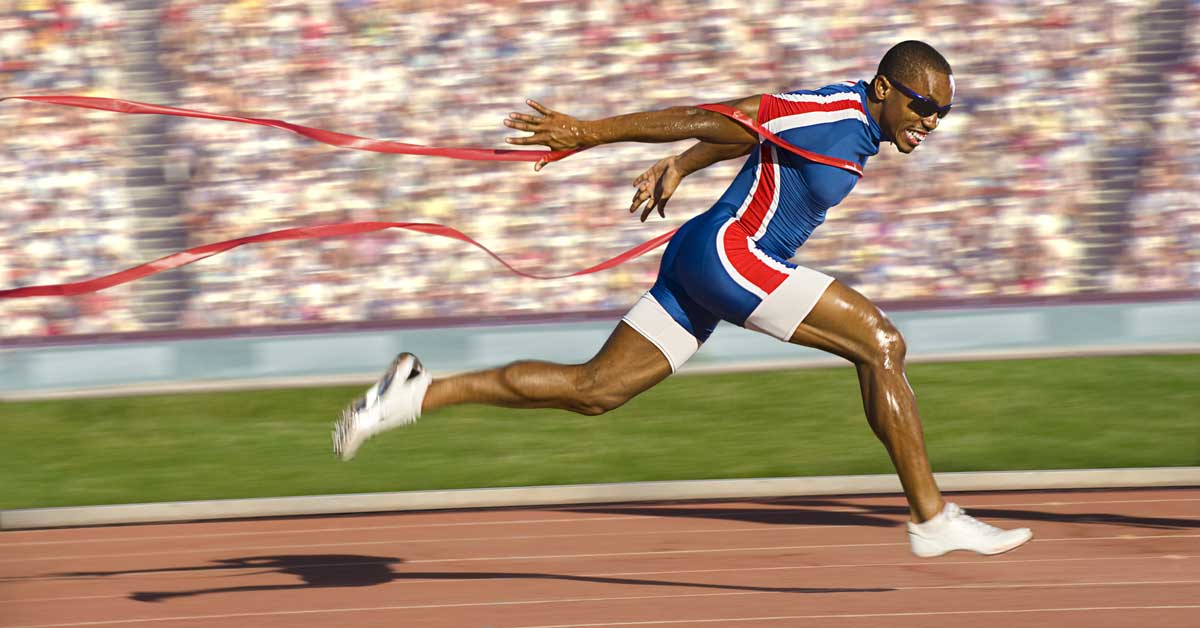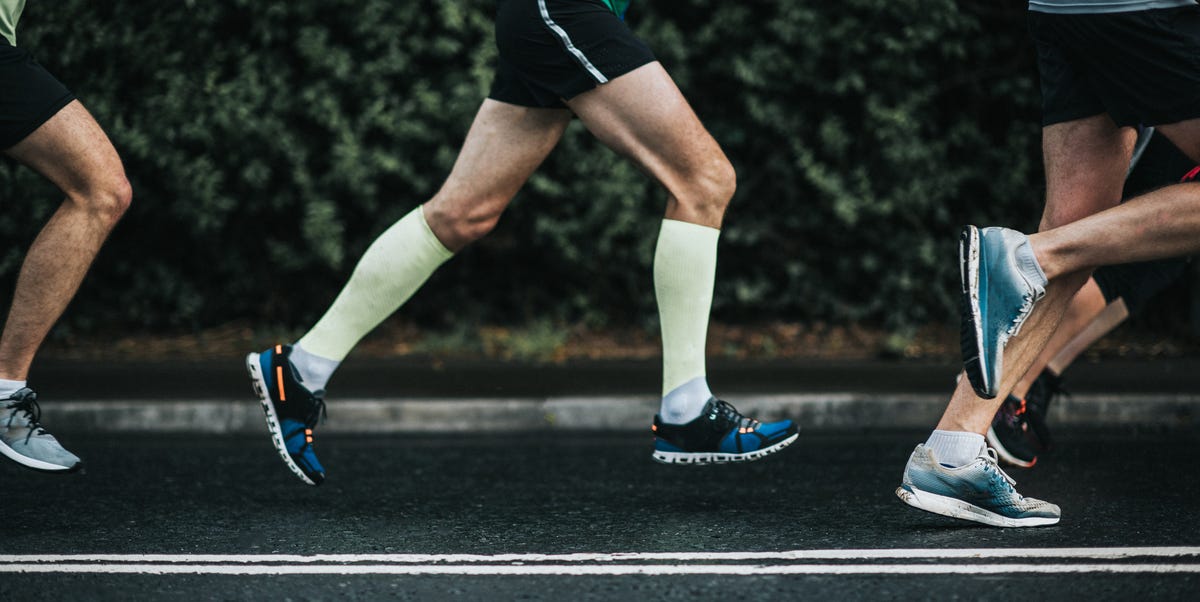The Significance of Stride Length in Sprinting
Stride length plays a crucial role in the performance of sprinting events. It refers to the distance covered between each foot strike while running. Increasing stride length in sprinting can significantly improve speed and efficiency, making it an essential aspect of training for athletes and fitness enthusiasts alike.

Understanding Your Current Stride Length
Before attempting to increase your stride length, it is essential to assess your current stride length accurately. This information will provide a baseline for tracking progress and setting realistic goals. Here are some steps to measure and analyze your stride length:
- Use a Track or Treadmill: To obtain accurate measurements, it is best to measure your stride length on a track or treadmill. This will allow you to calculate the distance covered between each foot strike accurately.
- Mark Starting and Ending Points: Place a marker at the starting point and another at the point where your foot first lands after taking a step. Measure the distance between these two points to determine your stride length.
- Calculate Stride Length: Divide the total distance covered by the number of strides taken to find your average stride length. For instance, if you cover 100 meters in 20 strides, your stride length is 5 meters (100 meters / 20 strides).
- Analyze Results: Compare your stride length to recommended values for your height, age, and fitness level. This will help you identify areas for improvement and set realistic goals for increasing your stride length.
By understanding your current stride length, you can create a targeted training plan to improve your performance in sprinting events. Regularly monitoring your progress and adjusting your training plan accordingly will help you achieve your goals more effectively.

Improving Flexibility and Mobility
Flexibility and mobility are crucial factors in enhancing stride length in sprinting. Tight muscles can limit your range of motion and restrict your ability to extend your legs fully during each stride. By incorporating stretches and exercises that target key muscle groups, you can improve your flexibility and mobility, leading to increased stride length and faster running speeds.
Targeted Muscle Groups
The primary muscle groups to focus on for improving stride length are the hamstrings, glutes, and hip flexors. These muscles play a significant role in propelling your body forward and extending your legs during each stride. By increasing the flexibility and mobility of these muscle groups, you can optimize your running technique and achieve longer strides.
Recommended Exercises and Stretches
- Hamstring Stretches: Perform static stretches for the hamstrings, such as the seated forward bend or the standing hamstring stretch, to improve flexibility in this muscle group.
- Glute Stretches: Incorporate stretches like the pigeon pose or the seated glute stretch to increase mobility in the glutes and enhance your running performance.
- Hip Flexor Stretches: Perform stretches like the lunge stretch or the kneeling hip flexor stretch to target the hip flexors and improve your stride length.
- Dynamic Stretches: Incorporate dynamic stretches, such as leg swings, walking lunges, and high knees, into your warm-up routine to improve mobility and prepare your muscles for sprinting.
By regularly performing these exercises and stretches, you can enhance your flexibility and mobility, ultimately contributing to increased stride length and improved sprinting performance. Remember to always warm up before engaging in stretching activities and cool down afterward to prevent injury.

Strength Training for Powerful Strides
Strength training plays a vital role in increasing stride length in sprinting. By developing lower body power, you can generate more force with each stride, enabling you to cover greater distances and improve your overall performance. Incorporating specific strength training exercises into your routine can help you build the necessary power and explosiveness for longer strides.
Recommended Strength Training Exercises
- Squats: Squats are a fundamental strength training exercise for developing lower body power. Perform both back squats and front squats to target different muscle groups and improve your overall strength.
- Lunges: Lunges are another effective exercise for building lower body strength and power. Variations such as walking lunges, reverse lunges, and side lunges can help target various muscle groups and improve your balance and stability.
- Deadlifts: Deadlifts are an excellent exercise for strengthening the hamstrings, glutes, and lower back. Incorporating deadlifts into your strength training routine can help you build a solid foundation for powerful strides.
- Plyometric Exercises: Plyometric exercises, such as box jumps and bounding, can help improve your explosiveness and power, contributing to increased stride length. Incorporate these high-intensity exercises into your routine to develop the necessary power for longer strides.
When performing strength training exercises, focus on proper form and technique to maximize the benefits and minimize the risk of injury. Start with lower weights and gradually increase the load as you become stronger. Aim to perform strength training exercises 2-3 times per week, allowing adequate recovery time between sessions.

Optimizing Running Technique
Proper running technique is crucial for increasing stride length in sprinting. By focusing on the biomechanics of sprinting, you can optimize your form and generate more power with each stride. Here are some tips for maintaining an upright posture, driving the knees, and engaging the core for maximum stride length.
Maintaining an Upright Posture
Maintaining an upright posture is essential for maximizing stride length. Leaning too far forward or backward can negatively impact your speed and efficiency. To maintain proper posture, focus on keeping your chest up and your shoulders back. This will help you maintain a straight line from your head to your feet, allowing you to generate more power with each stride.
Driving the Knees
Driving the knees is another critical aspect of increasing stride length. To drive the knees, focus on engaging your hip flexors and bringing your knees up towards your chest. This will help you generate more power with each stride and cover more distance with each step.
Engaging the Core
Engaging the core is essential for maintaining proper running form and generating power with each stride. To engage your core, focus on bracing your abdominal muscles as if you were expecting a punch. This will help you maintain proper posture and generate more power with each stride.
Additional Technique Tips
- Focus on landing on the balls of your feet rather than your heels.
- Avoid overstriding, which can lead to decreased speed and increased injury risk.
- Swing your arms forward and backward, keeping them at a 90-degree angle.
- Keep your head up and your eyes focused on the horizon.
By focusing on proper running technique, you can optimize your form and generate more power with each stride. Incorporate these tips into your training routine to increase your stride length and improve your overall sprinting performance.

Training Drills for Increased Stride Length
Incorporating specific training drills into your routine can help increase your stride length and improve your overall sprinting performance. Here are some drills to consider, along with instructions on how to perform them correctly.
High Knees
High knees are a simple yet effective drill for increasing stride length. To perform high knees, follow these steps:
- Start by standing in place with your feet hip-width apart.
- Begin running in place, bringing your knees up towards your chest with each step.
- Focus on quick, explosive movements, and pump your arms to help drive your knees up.
- Perform high knees for 20-30 seconds, then rest for 30-60 seconds before repeating.
Butt Kicks
Butt kicks are another effective drill for increasing stride length. To perform butt kicks, follow these steps:
- Start by standing in place with your feet hip-width apart.
- Begin running in place, focusing on kicking your heels up towards your glutes with each step.
- Swing your arms naturally and keep your posture upright.
- Perform butt kicks for 20-30 seconds, then rest for 30-60 seconds before repeating.
A-Skips
A-skips are a more advanced drill that can help increase stride length and improve running form. To perform A-skips, follow these steps:
- Start by standing tall with your feet hip-width apart.
- Begin running forward, but bring your knee up towards your chest with each step.
- As you bring your knee up, extend your opposite arm straight up in the air.
- Focus on quick, explosive movements and land on the balls of your feet.
- Perform A-skips for 20-30 yards, then rest for 30-60 seconds before repeating.
Incorporate these training drills into your routine 2-3 times per week to help increase your stride length and improve your overall sprinting performance. Remember to always warm up before performing any drills and cool down afterwards to prevent injury.

Monitoring Progress and Setting Goals for Increasing Stride Length in Sprinting
Tracking progress and setting realistic goals are essential components of any training program aimed at increasing stride length in sprinting. By monitoring improvements and adjusting training plans accordingly, athletes can ensure they are making consistent progress towards their goals.
Monitoring Progress
To effectively monitor progress, athletes should consider the following methods:
- Video Analysis: Record sprinting sessions and analyze them to track changes in stride length over time.
- Stride Length Measurement: Measure stride length regularly to track improvements and adjust training plans accordingly.
- Performance Metrics: Monitor performance metrics such as sprint times and power output to assess overall progress.
Setting Realistic Goals
Setting realistic goals is crucial for maintaining motivation and ensuring consistent progress. Athletes should consider the following tips when setting goals:
- Set Specific Goals: Clearly define the goal, such as increasing stride length by a certain amount over a specific timeframe.
- Make Goals Measurable: Use metrics such as stride length or sprint times to measure progress towards the goal.
- Set Achievable Goals: Ensure the goal is challenging yet achievable, based on current fitness levels and progress.
- Create a Timeline: Establish a timeline for achieving the goal, including milestones and checkpoints along the way.
By monitoring progress and setting realistic goals, athletes can ensure they are making consistent progress towards increasing their stride length in sprinting. Remember to be patient and persistent, as significant improvements may take time and dedication.
Incorporating Hill Sprints and Plyometrics for Increased Stride Length in Sprinting
Hill sprints and plyometric exercises are high-intensity activities that can contribute significantly to increasing stride length in sprinting. These exercises help improve power, explosiveness, and running economy, making them valuable additions to any training program.
Hill Sprints
Hill sprints involve running uphill at maximum effort for short distances, typically between 10-30 meters. The incline of the hill forces athletes to generate more power with each stride, resulting in improved lower body strength and increased stride length.
- Find a suitable hill with an appropriate incline.
- Warm up thoroughly before starting hill sprints.
- Begin with 4-6 repetitions, gradually increasing as fitness levels improve.
- Ensure adequate recovery between repetitions, typically 2-3 minutes.
Plyometric Exercises
Plyometric exercises, such as box jumps and bounding, involve explosive movements that help improve power, agility, and running technique. These exercises can directly contribute to increased stride length and overall sprinting performance.
- Box Jumps: Stand in front of a sturdy box or platform and explosively jump onto it, landing softly. Step down and repeat for 3-4 sets of 8-10 repetitions.
- Bounding: Perform exaggerated skipping motions, focusing on driving the knees and extending the hips with each stride. Aim for 3-4 sets of 20-30 meters.
When incorporating hill sprints and plyometric exercises into a training program, it’s essential to prioritize proper form and technique to minimize the risk of injury. Start with lower volumes and gradually increase as fitness levels improve. Additionally, ensure adequate recovery between sessions to allow the body to adapt and grow stronger.

